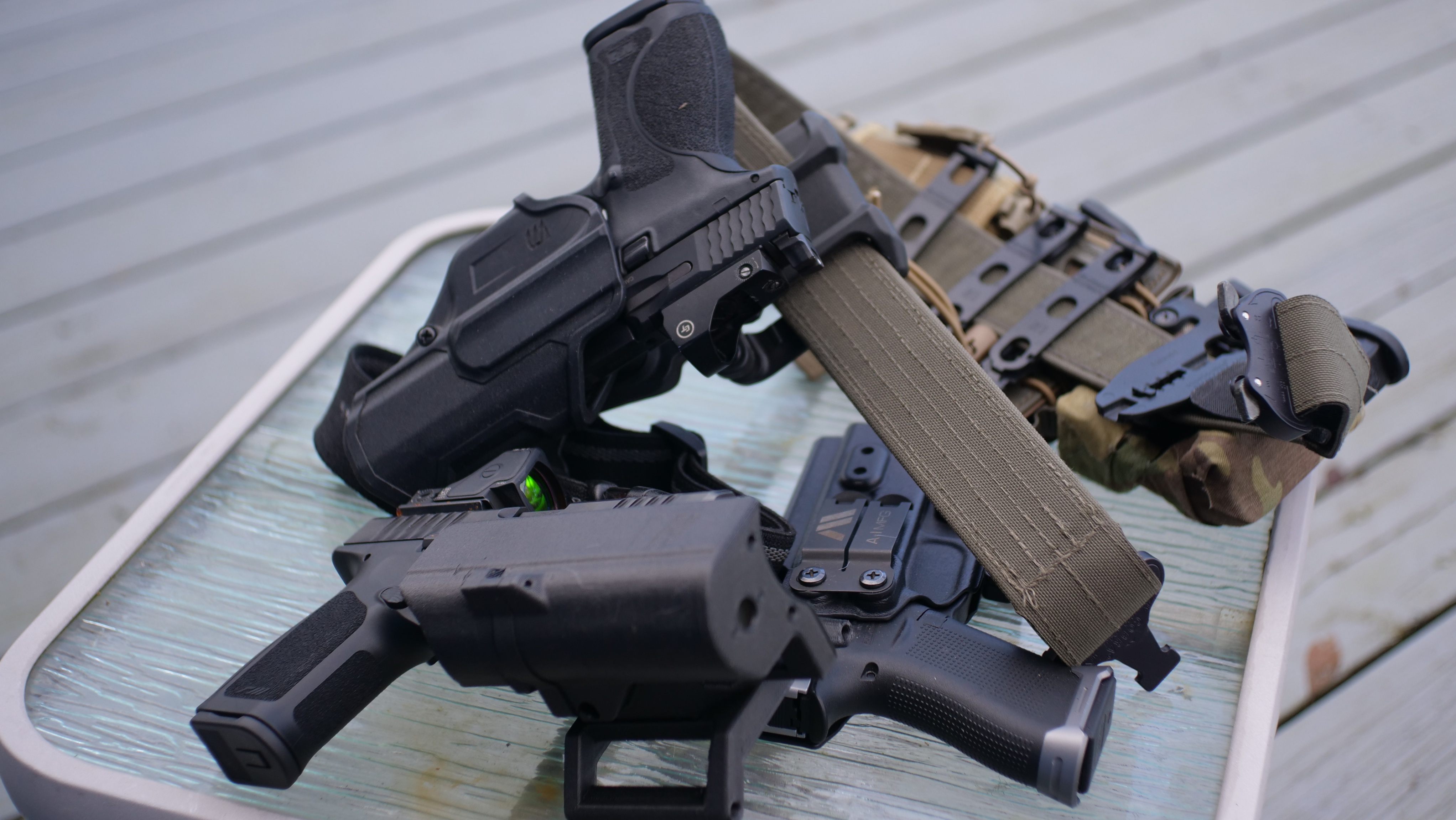Blog # 286 - Modify or Buy? What To Do With Your Holster When You Add Upgrades to Your Gun

Feb 9, 2024
By Luke Cuenco
0 comment(s)
Modify or Buy? What To Do With Your Holster When You Add Stuff to Your Gun
We live in an age where modifying your concealed carry firearms, or any firearm for that matter is incredibly easy. Suppose you’ve been reading the Tyrant Designs blog for a while. In that case, you’ll know that Tyrant Designs specializes in premium aftermarket components that either aesthetically or functionally upgrade your firearm to give you a better grip, trigger, or look. No matter what the modification is, it’ll likely have at least a little bit of impact on how you carry that specific firearm meaning you might have to get a new holster to accommodate for it. Today we’ll discuss situations in which it's better to modify your holster or buy a new one altogether.
Modify or Not?
Modifying your guns is fun. Whether it's your favorite range toy or one that you might have to use for self-defense, I think just about everyone gets some enjoyment out of customizing their firearms to fit their needs and or desires. When it comes to a concealed carry firearm, we tend to place a lot more emphasis on reliability, concealability, and safety. The last thing anyone wants is a malfunction or other firearm-related issue to happen when your life depends on it. Keeping that in mind, modifications to a handgun and a holster can safely be made without compromising reliability, concealability, or safety - at least in most cases. Below we’ll discuss some situations that you’ll come across when altering your firearm and whether or not you should buy a new holster.
When NOT To Modify
Active retention holsters (ones where you have to press a lever or button) should typically not be modified when it comes to the retention mechanism itself. Examples like the Safariland ALS series of holsters feature a very small and simple locking mechanism that relies on the proper indexing of both the muzzle and trigger guard of the firearm to properly lock. Aftermarket items like threaded barrels, compensators, or dust cover-mounted lasers will usually require an entirely new holster as would the addition or removal of any type of weapon-mounted light.
In cases where a firearm modification has or is causing your firearm not to be retained properly (regardless of passive or active retention), you shouldn’t attempt to modify the holster to accommodate it without first checking that any of the retention or safety functions of the holster are being affected in any way. Even in cases where you’re only modifying the body of the holster (one example being larger magazine releases, gas pedals or oversized takedown levers) you should take extreme caution as this can cause the way your firearm sits within the holster to either cause retention issues or allow the holster to move around too much which could potentially cause an accidental discharge from within the holster.
When it’s acceptable to Modify
Holster modification isn’t exactly taboo but it should be fairly rare. To show a great example of when it might be okay to modify a holster I’ll give you one recent example from a firearm I used to own. When I first modified my original SIG Sauer P365 pistol to accommodate a Trijicon RMRcc, I discovered that my factory passive retention SIG Sauer holster didn’t accommodate the optic. To solve this I simply heated the plastic holster and rammed (the unloaded) P365 and optic into the holster. Since I had only heated the spot where the optic was making contact with the holster body, the plastic conformed itself to the shape of the optic and this allowed the entire gun including the optic to be properly secured via tension without compromising any of the safety features.
Another example with my Glock 45 MOS is when I added the new(ish) Trijicon RMR HD to the gun. Since the optic was so new, there were no available holsters fit for the optic from Safariland yet so I used a Dremel to shave away a bit of the section where the optic cover hood normally rotates (something I wasn’t using anyway). Once again this allowed the optic and firearm to fully seat within the holster and be actively retained while allowing enough space for the optic body to not make contact with the holster body.
Safety First
Hopefully what you’re getting from these two brief examples is that it’s probably okay to modify your holster, even if it uses active retention as long as you’re sure it’s not going to impact the inherent safety measures built into the holster. Improperly modifying a holster can adversely affect how the firearm is carried and can even cause accidental discharges if the proper precautions and safety checks aren’t being made.
If you do choose to modify a holster to accommodate your modified gun, be sure that you do plenty of preliminary and post-modification safety checks with an unloaded gun to be sure that the critical components (trigger, safety, magazine release, and slide stop) are not being inadvertently activated when holstering or unholstering the gun. This way you can be sure that not only will your modifications fit, but that they won’t pose any additional risk when the firearm is being carried. We’d love to hear from you and what you do when it comes to getting your updated guns fitted for holsters, let us know in the comments what you do when updating your carry guns.
